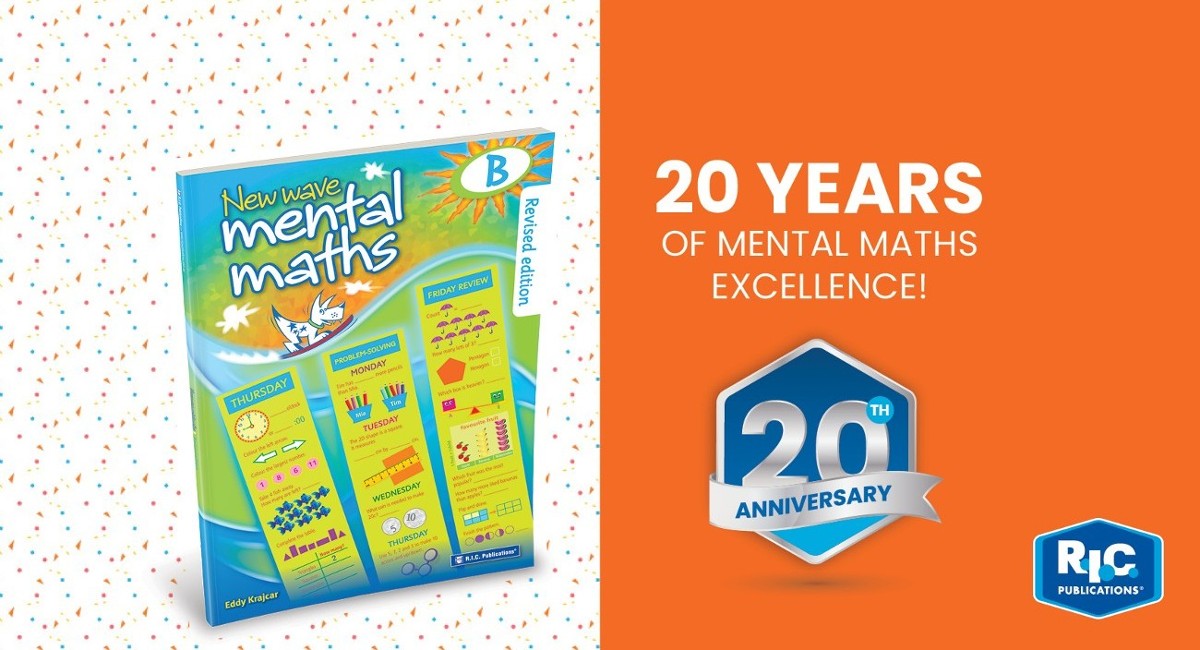- Monday 11 March 2019
- 0 Comments
To help celebrate 20 years of the bestselling New wave mental maths maths book series, we had a chat with the author, Eddy Krajcar, to find out more about the motivation and process behind it. For two decades, this workbook has been successfully helping students master essential mathematics.
A chat with author of New wave mental maths - Eddy Krajcar.
Where did the idea for New wave mental maths come from?
I started teaching in the early 1990s and found that a large number of students lacked understanding and skills of simple maths, like telling the time, basic facts, money and simple strategies.
Why, do you think, it is so important to practise mental maths concepts?
Teaching such concepts in a one-off block doesn’t reinforce or consolidate their learning enough. Looking at the maths text books available, at the time and still today, concepts are taught and worked on once and then forgotten. As an example, if time is taught in a two-week block at the beginning of the year, a general maths book may have two pages dedicated to that concept. How do students keep momentum of their learning? They don’t. However, New wave mental maths reminds them of the concepts in a periodic manner by revisiting these concepts. This not only develops their understanding but gives students further insight and may stimulate interest in certain topics.
Can you tell us more about the revision and homework component?
The other key aspect of New wave mental maths is the weekly ‘Friday review’, with the latest version offering colour-coded strands for Number and Algebra, Measurement and Geometry, and Statistics and Probability. The review looks at what work was done the week(s) before. The ‘Friday review’ can be used as a form of assessment in a flexible way, whether on a weekly or fortnightly basis, giving the teacher valuable information about their students’ progress. It can assist teachers in identifying those higher-level students, as well as those not grasping concepts. The teacher can then make plans that can follow in the form of extension or remediation.
Another aspect of New wave mental maths is that many schools have used it as a homework and class book. This helps teachers by having a product for maths homework without spending valuable time reinventing the wheel on a daily and weekly basis.
How has New wave mental maths evolved over the years?
New wave mental maths has continued its presence in Australia for two decades as teachers can see the benefits of this ‘program in a book’. The books have been updated regularly over the years and in the latest version we have incorporated a problem-solving section. Other new features include shifting the book to full colour, with dynamic and exciting illustrations that many students enjoy (and the visualisation is also beneficial for many). With its success, the series has been exported to more than 25 countries, in particular Ireland, South Africa, UK, New Zealand and the USA (as Daily Mental Maths).
Now that you’ve had a look at what brought Eddy Krajcar to write New wave mental maths, it’s time to check out the workbooks for yourself! Go here to grab a free sample or see the full range today, and view our range of maths educational resources.
